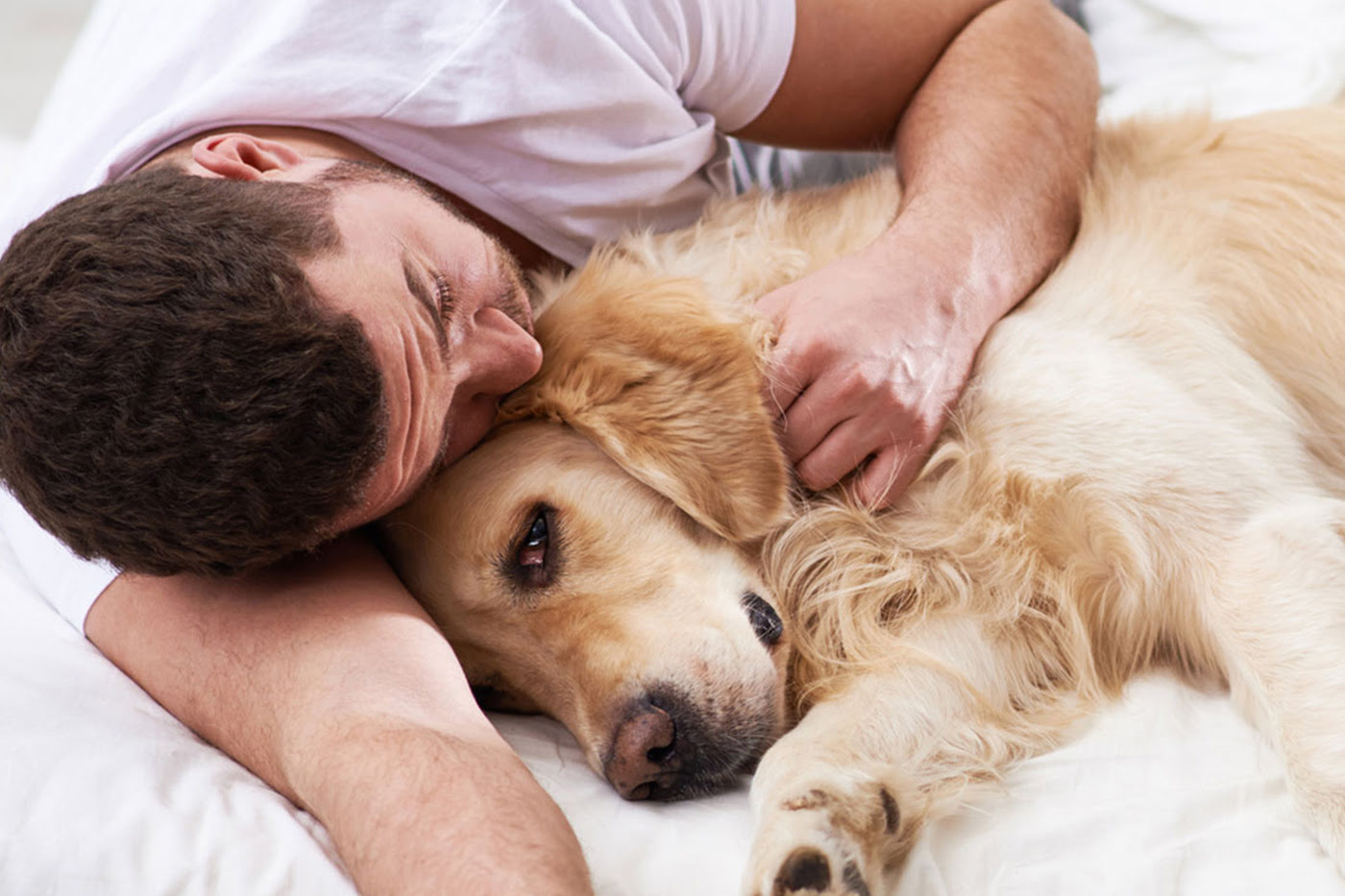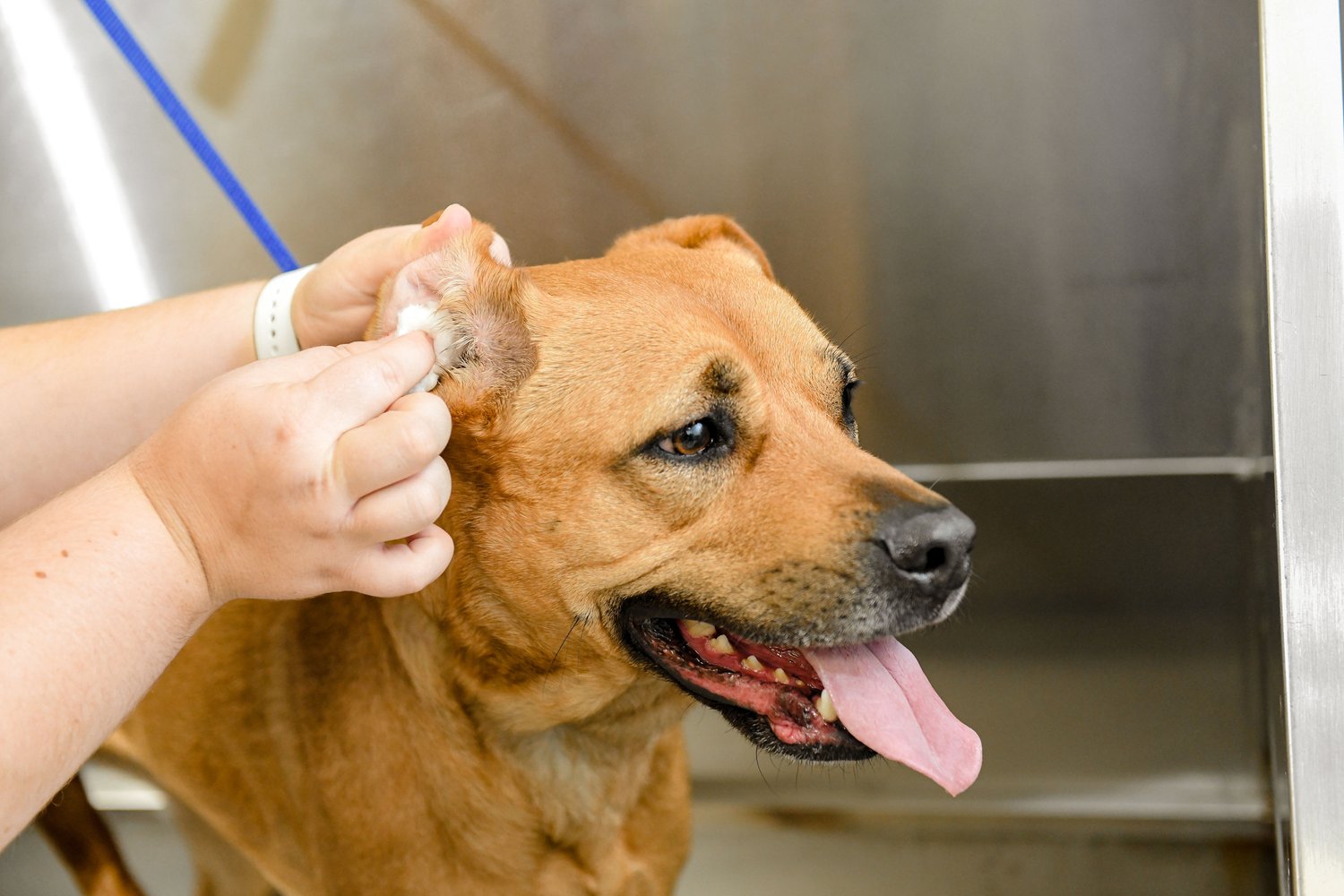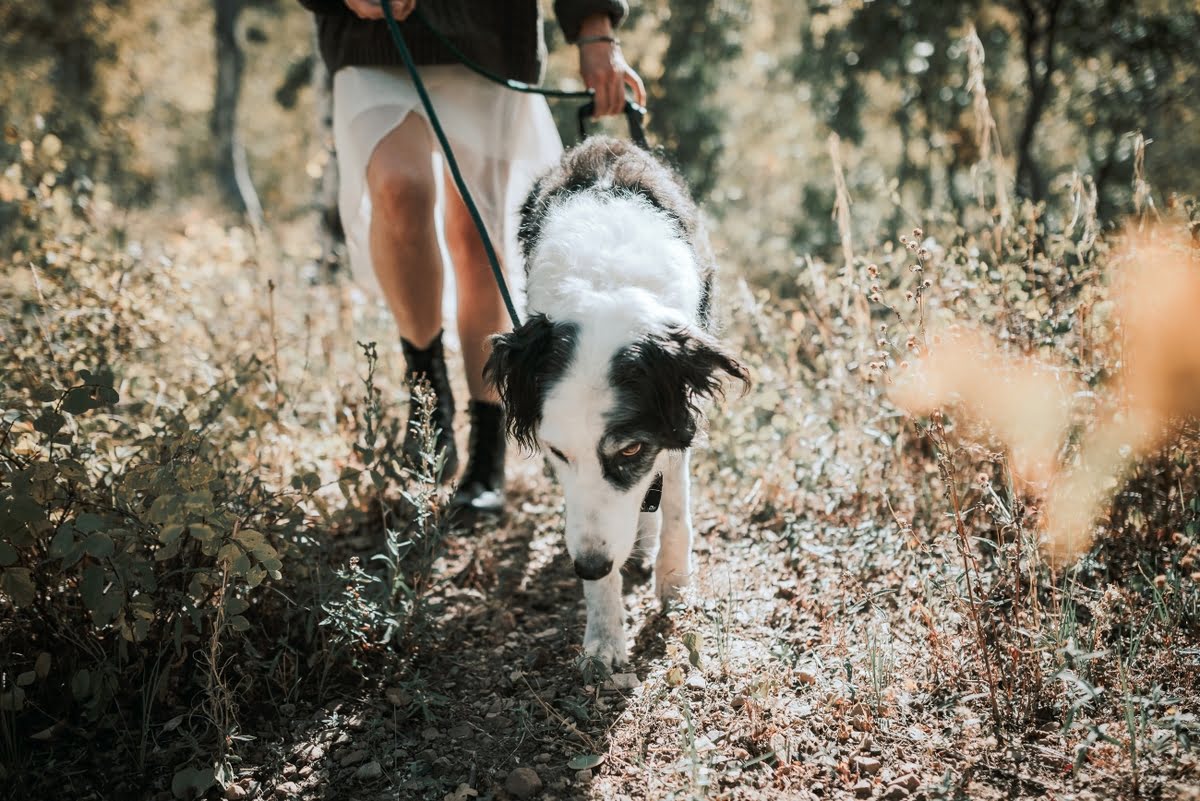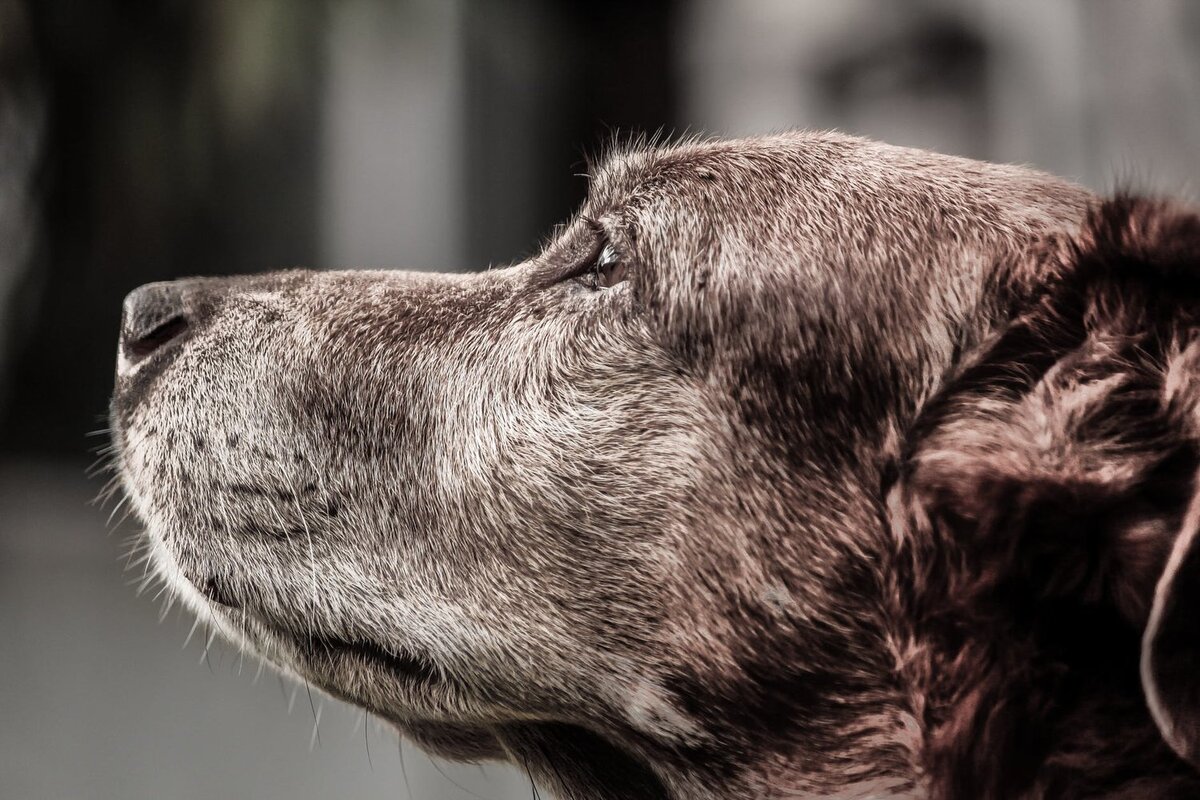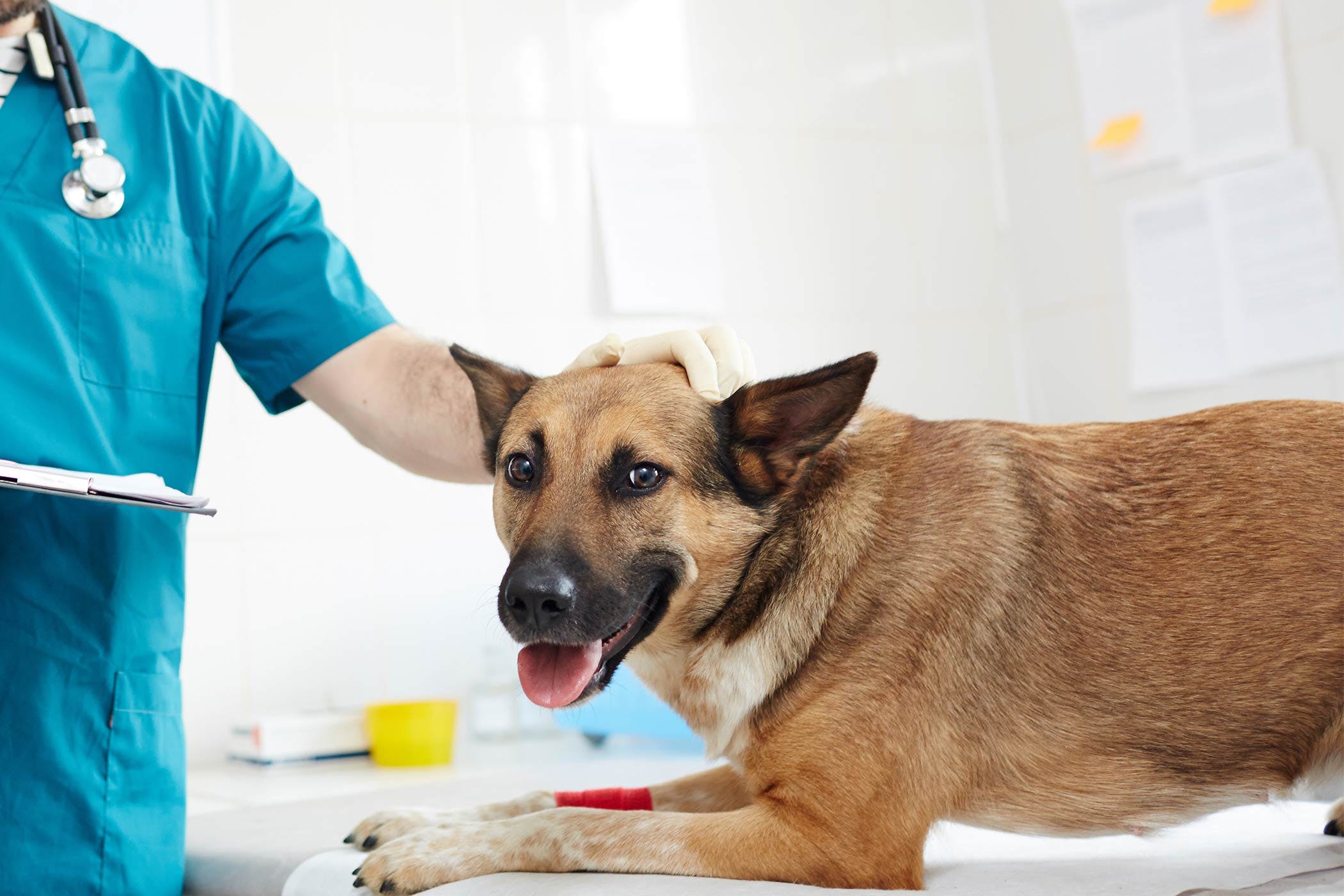Home>Health & Wellness>Behavior & Cognitive Care>How To Know When A Senior Dog Is Dying


Behavior & Cognitive Care
How To Know When A Senior Dog Is Dying
Published: February 1, 2024
Learn the signs of a senior dog's decline in behavior and cognitive function. Understand how to recognize when a senior dog is approaching the end of life.
(Many of the links in this article redirect to a specific reviewed product. Your purchase of these products through affiliate links helps to generate commission for Pawsomeoldies.com, at no extra cost. Learn more)
Table of Contents
Signs of a Dying Senior Dog
As our beloved canine companions age, it's essential to be attuned to the signs that may indicate they are approaching the end of their life. Recognizing these signs can help us provide the necessary care and support to ensure their comfort and well-being during this delicate stage. Here are the key indicators that may signal a senior dog is nearing the end of its life:
-
Changes in Energy Levels: A noticeable decrease in energy and increased lethargy can be an early sign that a senior dog is entering the final stages of life. They may become less interested in activities they once enjoyed and prefer to rest for extended periods.
-
Appetite and Weight Loss: Senior dogs nearing the end of life may experience a loss of appetite, leading to a decline in body weight. This can be a distressing sign for pet owners, as it often indicates a shift in the dog's overall health.
-
Altered Breathing Patterns: Changes in a senior dog's breathing, such as labored breathing, rapid panting, or shallow breaths, can be indicative of underlying health issues that may signal the dog's declining health.
-
Behavioral Changes: Senior dogs may exhibit changes in behavior, such as increased irritability, restlessness, or withdrawal from social interaction. These shifts in behavior can be a result of discomfort or pain associated with the aging process.
-
Loss of Bladder and Bowel Control: In the final stages of life, senior dogs may experience incontinence or a loss of control over their bladder and bowel functions. This can be a challenging and distressing symptom for both the dog and its owner.
-
Decreased Mobility: A decline in mobility, including difficulty standing, walking, or navigating familiar spaces, can be a sign that a senior dog is approaching the end of its life. This may be due to age-related conditions such as arthritis or muscle weakness.
-
Changes in Cognitive Function: Senior dogs may experience cognitive decline, leading to disorientation, confusion, and difficulty recognizing familiar people or surroundings. These changes can significantly impact the dog's quality of life in its final days.
Understanding these signs can help pet owners provide the necessary support and comfort to their senior dogs as they approach the end of their life. It's essential to approach this stage with compassion and attentiveness, ensuring that our loyal companions receive the care and love they deserve during this sensitive time.
Changes in Behavior
Changes in a senior dog's behavior can serve as crucial indicators of its declining health and approaching end of life. These behavioral shifts often manifest as a result of the physical and cognitive changes that accompany the aging process. Understanding and recognizing these changes is essential for providing the necessary care and support to senior dogs during this delicate stage of their lives.
One of the most common behavioral changes observed in senior dogs nearing the end of their life is increased irritability or agitation. This may manifest as a heightened sensitivity to touch, sound, or movement, leading the dog to react negatively to stimuli that previously did not bother them. Such irritability can be a response to discomfort, pain, or the dog's struggle to cope with the physical limitations imposed by aging.
In addition to irritability, senior dogs may exhibit signs of restlessness or an inability to settle comfortably. They may frequently change positions, struggle to find a comfortable resting spot, or appear unable to relax. This restlessness can be attributed to discomfort, anxiety, or the dog's inability to find relief from the physical symptoms associated with aging.
Another concerning behavioral change in senior dogs is withdrawal from social interaction. Dogs that were once sociable and affectionate may begin to isolate themselves, showing disinterest in engaging with family members or other pets. This withdrawal can be a manifestation of the dog's discomfort, pain, or the cognitive changes that impact its ability to recognize and respond to familiar individuals.
Furthermore, senior dogs nearing the end of their life may display changes in their sleep patterns. They may experience difficulty falling asleep, frequent waking during the night, or an increase in daytime napping. These disruptions in sleep patterns can be indicative of discomfort, anxiety, or the dog's struggle to find a comfortable and restful position due to physical limitations.
It's important for pet owners to approach these behavioral changes with empathy and understanding. Providing a calm and comforting environment, offering gentle physical contact, and ensuring that the dog's living space is conducive to relaxation can help alleviate some of the distress associated with these behavioral shifts. Additionally, consulting with a veterinarian to explore potential interventions or palliative care options can contribute to improving the senior dog's quality of life during this challenging phase.
Recognizing and addressing these changes in behavior is crucial for ensuring that senior dogs receive the support and care they need as they approach the end of their life. By understanding the underlying reasons for these behavioral shifts, pet owners can make informed decisions to enhance their senior dog's comfort and well-being during this sensitive stage.
Physical Symptoms
Physical symptoms exhibited by senior dogs nearing the end of their life can provide valuable insights into their overall health and well-being. These symptoms often manifest as a result of age-related conditions, chronic illnesses, or the natural progression of the aging process. Recognizing and understanding these physical indicators is essential for pet owners to provide the necessary care and support to their senior canine companions during this delicate stage.
One of the prominent physical symptoms observed in senior dogs approaching the end of life is a noticeable decline in mobility. This can manifest as difficulty standing up, walking, or navigating familiar spaces. Age-related conditions such as arthritis, muscle weakness, or degenerative joint diseases can contribute to the dog's reduced mobility, impacting its ability to move comfortably and engage in regular activities.
In addition to mobility issues, senior dogs may experience a decline in their sensory functions, particularly their vision and hearing. Diminished eyesight and hearing loss can significantly impact a dog's quality of life, leading to disorientation, difficulty recognizing familiar individuals, and increased vulnerability to environmental stimuli. These sensory impairments can contribute to the dog's overall sense of insecurity and may necessitate adjustments in its living environment to ensure safety and comfort.
Furthermore, senior dogs nearing the end of their life may exhibit signs of respiratory distress, such as labored breathing, rapid panting, or shallow breaths. These breathing irregularities can be indicative of underlying health issues, including respiratory conditions, heart disease, or the overall decline in the dog's physical condition. Monitoring the dog's breathing patterns and seeking veterinary guidance can help address potential respiratory concerns and ensure the dog's comfort.
Another significant physical symptom observed in senior dogs is a decline in appetite and weight loss. Loss of interest in food, decreased appetite, or difficulty in maintaining body weight can be distressing indicators of the dog's declining health. These symptoms may be associated with various underlying health issues, including organ dysfunction, metabolic imbalances, or age-related changes in the dog's digestive system.
Moreover, senior dogs nearing the end of their life may experience incontinence or a loss of control over their bladder and bowel functions. This can pose significant challenges for both the dog and its owner, impacting the dog's comfort and requiring additional support and care to manage these symptoms effectively.
Understanding and addressing these physical symptoms is crucial for ensuring the well-being and comfort of senior dogs as they approach the end of their life. By recognizing these indicators and seeking appropriate veterinary care and support, pet owners can provide their beloved senior canine companions with the compassionate care they deserve during this sensitive stage of their lives.
Quality of Life Considerations
Understanding and evaluating the quality of life of a senior dog as it approaches the end of its life is a paramount responsibility for pet owners. This involves a comprehensive assessment of various factors that contribute to the dog's overall well-being and comfort during this delicate stage. By considering these quality of life considerations, pet owners can make informed decisions and provide the necessary support to ensure their senior canine companions experience dignity and comfort in their final days.
One of the primary considerations in assessing a senior dog's quality of life is its level of pain and discomfort. Monitoring the dog's physical symptoms and behavior for signs of distress or pain is essential for addressing its comfort needs. Implementing pain management strategies, such as medication, physical therapy, or environmental modifications, can significantly alleviate the dog's discomfort and enhance its quality of life.
Additionally, the dog's ability to engage in activities that bring it joy and fulfillment is a crucial aspect of its quality of life. Senior dogs may have limitations in mobility or sensory functions, but identifying and facilitating activities that bring them happiness, such as gentle play, mental stimulation, or spending time outdoors, can contribute to their overall well-being and emotional fulfillment.
Nutritional support and maintaining a healthy appetite are also vital considerations for a senior dog's quality of life. Ensuring that the dog receives a balanced and nutritious diet, addressing any feeding difficulties or dietary restrictions, and monitoring its weight and hydration levels are essential for supporting its physical health and vitality.
Furthermore, the dog's emotional well-being and sense of security play a significant role in its quality of life. Providing a calm and comforting environment, offering gentle physical contact, and maintaining familiar routines can help alleviate the dog's anxiety and promote a sense of security during this challenging stage of its life.
Lastly, the pet owner's ability to provide attentive and compassionate care, along with regular veterinary monitoring and support, is fundamental in ensuring the senior dog's quality of life. Open communication with the veterinarian, exploring palliative care options, and making informed decisions regarding the dog's comfort and well-being are essential components of supporting its quality of life in its final days.
By considering these quality of life considerations and addressing the various aspects that contribute to the senior dog's well-being, pet owners can ensure that their beloved companions experience dignity, comfort, and love as they approach the end of their life. This holistic approach to assessing and enhancing the quality of life of senior dogs reflects the deep bond and unwavering commitment between pet owners and their loyal canine companions.
When to Seek Veterinary Care
Recognizing the appropriate time to seek veterinary care for a senior dog approaching the end of its life is a critical aspect of responsible pet ownership. While providing attentive and compassionate care at home is essential, there are specific circumstances and indicators that warrant professional veterinary attention to ensure the dog's comfort and well-being during this delicate stage.
One of the primary considerations for seeking veterinary care is the management of the dog's pain and discomfort. If the senior dog exhibits signs of persistent or escalating pain, such as vocalization, restlessness, or reluctance to move, it is crucial to consult with a veterinarian. The veterinarian can assess the dog's pain levels, recommend appropriate pain management strategies, and ensure that the dog's comfort needs are effectively addressed.
Additionally, significant changes in the dog's physical condition, such as sudden weight loss, loss of appetite, or the development of new lumps or growths, necessitate prompt veterinary evaluation. These changes may indicate underlying health issues that require professional assessment and potential intervention to maintain the dog's well-being.
Furthermore, if the senior dog experiences acute respiratory distress, such as severe difficulty breathing, persistent coughing, or bluish discoloration of the gums or tongue, immediate veterinary care is imperative. Respiratory issues can significantly impact the dog's comfort and may require urgent medical attention to alleviate distress and ensure adequate oxygenation.
Moreover, the onset of uncontrolled bleeding, seizures, or loss of consciousness in a senior dog warrants immediate veterinary intervention. These emergent situations require prompt assessment and medical care to address the dog's critical health needs and ensure its safety and comfort.
Additionally, if the senior dog's quality of life is significantly compromised due to unmanageable symptoms, distressing behavioral changes, or a decline in its ability to engage in daily activities, consulting with a veterinarian is essential. The veterinarian can provide guidance on palliative care options, supportive interventions, and compassionate end-of-life care to enhance the dog's comfort and dignity during this sensitive stage.
By recognizing these indicators and promptly seeking veterinary care when necessary, pet owners can ensure that their senior canine companions receive the professional support and attention required to navigate the end-of-life phase with compassion and dignity. Open communication with the veterinarian and proactive assessment of the dog's health and well-being are fundamental in providing the best possible care for senior dogs as they approach the end of their life.
